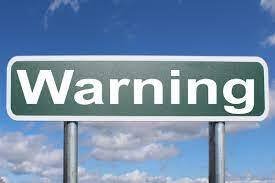Table of Contents
Your Google Ads Are Not Working If You See These 7 Warning Signs

If you’ve invested time and money into Google Ads for your Las Vegas business but aren’t getting the results you hoped for, there are some clear warning signs indicating your campaigns need optimization. The worst thing you can do is continue pouring budget into a Google Ads account that is underperforming.
We know how frustrating it can be to feel like your Google Ads spend isn’t getting you any worthwhile return. The good news is that with some expert adjustments, you can get your PPC campaigns back on track to driving conversions, leads, and sales for your business.
In this post, we’ll outline the 7 most common warning signs that your Google Ads account has critical issues needing to be addressed. We’ll also discuss what each warning sign means for your performance and provide tips to turn things around.
Optimizing when you spot these Google Ads red flags can help you:
- Increase conversion rates from your ads
- Lower your cost-per-click
- Improve your quality scores for better ad rank
- Generate more revenue relative to your spend
If you’re noticing any of these 7 symptoms in your Las Vegas Google Ads account, it’s time to take action to get your campaigns running smoothly again. Read on for how to spot and address the top Google Ads problems holding your performance back.

1. Low Click-Through Rate
Your click-through rate (CTR) measures how often people click your ad when it’s shown. A low CTR typically means your ad copy and messaging are not resonating with searchers or enticing them to click.
The average Google Ads CTR is around 2%. You’ll want your ad CTR to be higher than competitors in your industry. A CTR below 1% indicates your ad or landing page needs significant improvement.
Although this seems to be what the internet says. I am going to give you a realistic % of what your CTR should be on MOST accounts. 5-7% CTR should be the ideal CTR you are looking to get. Anything above 15% you should really look into where you are leaking money. Please make sure to check your search terms in the Campaign Manager Section.
2. High Cost Per Click
Cost per click (CPC) is the amount you pay when someone clicks your ad. A high CPC can mean you have inappropriate bid strategies or are bidding too high on underperforming keywords.
Review your keyword bids and implement tactics like enhanced CPC bidding. Also, evaluate low-converting or irrelevant keywords dragging your performance down.
High CPC can also be related to low-quality scores. Please keep this in mind when looking through you are auditing your Google Ads Account.
3. Low Quality Score
Google assigns a quality score (QS) of 1-10 for each keyword based on expected ad performance. Low-quality scores negatively impact where your ad ranks.
Relevant ad text, landing pages, and positive user experience help improve quality scores. Audit low QS keywords to identify optimization areas.
Rule of thumb: Anything above a 6 is normal and do not worry too much about trying to increase those keyword scores. 5 is a weird place, it usually can be fixed by A/B testing your ads with different headlines. Anything below a 5 usually is an ad copy problem or a Landing page messaging problem.
The quality score has a lot to do with CTR. The 3 factors of quality score are landing page experience, CTR, and Ad relevance.
4. High Bounce Rate
The bounce rate shows the percentage of site visitors who leave immediately without engaging further. A high bounce rate indicates your landing page is turning visitors away.
Look at on-page elements like load time, design, content, and call-to-action placement on high bounce-rate landing pages.
Your ideal bounce rate when you are looking at the paid traffic section in Google Analytics is 40-60%. Anything above the 70% range for bounce rate should be looked into.
5. Few Conversions
When your ads generate lots of clicks but minimal goal completions, the ad messaging is not aligned with the audience’s intent. Review your ad text, landing pages, and keywords. This also can be due to your high cost per conversion. The major thing you should look into is your landing page CTA funnel.
6. Negative ROI
A negative return on ad spend means you’re losing money on paid search campaigns. Set targets for key metrics like CPA and ROAS. Cut unprofitable keywords dragging performance down. You can also look into using manual bidding to control your keyword bids.
7. Irrelevant Traffic
Traffic referred from keywords unrelated to your business reveals targeting issues. Trim irrelevant keywords and improve negative keyword strategies to get suitable visitors.
If you’re noticing one or more of these 7 warning signs in your Las Vegas Google Ads account, it’s time to take action to get your campaigns back to generating positive ROI.
The first step is identifying where issues are occurring – whether it’s poor ad copy, high bounce rates, irrelevant keywords, or bidding errors. Performing a thorough audit helps pinpoint problem areas.
From there, work to optimize elements like ad text, landing pages, keywords, bids, and audience targeting. Consider restructuring campaigns and ad groups around high-intent topics. Implement tracking to monitor progress.
With expert Google Ads management, these accounts can go from wasting budget to driving conversions and sales. Our certified team knows how to diagnose issues and make the necessary optimizations for success.
If your Las Vegas Google Ads account needs an overhaul, contact us for a free campaign audit at Blue Sky Advertisement LLC. Our experts will provide data-driven insights into how to turn things around and start accomplishing your marketing goals through paid search.
FAQ
What is an ideal Google Ads CTR?
The ideal Google Ads click-through rate varies by industry and location. On average, a CTR of 5-7% is considered decent, while 5%+ is excellent for the service industry. Anything under 2% indicates issues needing optimization.
How can I lower my Google Ads cost per click?
Using automated bidding strategies like enhanced CPC, optimizing low-quality score keywords, adding negative keywords, excluding poor-performing placements, and testing ad variations. A method we recommend here at Blue Sky Advertisement is to take a hands on approach and use manual bidding.
What is a good Google Ads quality score?
Google considers a quality score between 7 and 10 to be good. Aim for at least 6/10. Low-quality scores under 5 mean your ads and landing pages need improvement to enhance relevance.
What should my Google Ads bounce rate be?
Ideally, strive for a bounce rate under 40%. Around 50-60% is average, while over 70% is high and signals landing page issues. Lower bounce rates indicate users are engaging with your site.
How many conversions should I expect from Google Ads?
The conversion rate you can expect depends on your industry and campaign objectives. As a benchmark, 2-3% conversion rates from clicks are decent for lead generation. If you have a properly set up landing page it would be around 8-10% on average. For e-commerce, aim for 1-2% conversions into sales.
What return should I expect from Google Ads spending?
Most businesses target at least a 3:1 return on Google Ads spending. Although this is the standard, its hard to do this with all the tracking codes being stripped on iphones. Calculate your ROAS goal based on potential customer lifetime value. Competitor benchmarking can help set realistic targets as well.





